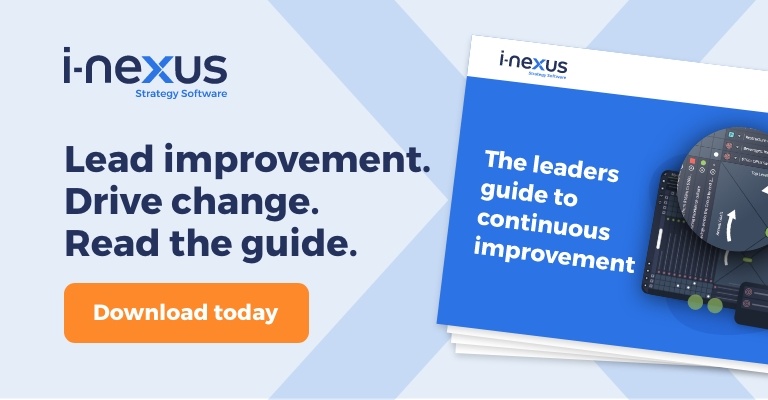Continuous improvement comes in many flavors – Lean, Six Sigma, Lean Six Sigma, the Toyota Production System – but there are 8 principles that unify the world of improvement.
Written by: Nigel Richardson
Continuous improvement is the idea that your business should achieve incremental improvements to its products, processes and services, and it has a number of common principles.
These principles serve to ensure that your improvement efforts are truly continuous and optimized for a higher quality of products of services, limited variation in processes, and that the journey to delivering value to your customers is smooth.
While many methodologies exist, Continuous improvement is at the core of each, meaning that there are commonalities to be found, and lessons to be followed as your role out your improvement initiatives.
Let’s begin with what the varying methodologies have in common.
What do the methodologies have in common?
Continuous improvement has evolved to the point where multiple tools, techniques, frameworks, and language have emerged, but there are commonalities to be found.
At its core, there is a difference in language and method which has grown based on variations in the underlying challenges improvement methodologies seek to address.
Also, different companies that have acted as early formative adopters have refined and evolved the application of continuous improvement, causing further diffusion.
Still, a level of reassurance can be derived from the fact that regardless of origin, the following principles are common across the entirety of continuous improvement.
Principle 1: The power sits in the why
What is the business problem you are trying to fix?
Do others understand that problem and take it seriously? Is that problem being communicated as a priority for the business in a consistent way?
If the why is not understood or respected, you will spend a considerable amount of time justifying why continuous improvement (and possibly your role in it) is important.
Principle 2: The customer is key
Whether it is Voice of the Customer or Defining the Critical to Quality/Customer needs; understanding what your customers value in what you do and how you do it is one of the fundamental principles of any improvement methodology.
The customers’ needs give you what you need to understand the non-value add from a Lean perspective, and enables you to set goals and targets for what level of variation is to be allowed in a process.
Principle 3: The people that perform the work know the answer
Involving, aligning and empowering employees is critical to a successful and sustained continuous improvement initiative.
Employees must appreciate that they have the opportunity and accountability to think of ways to make their work better and where it is in their gift, own the delivery.
Principle 4: Facts, not opinions (or opinions informed by fact)
A considerable proportion of the discipline and processes associated with continuous improvement relies on understanding the current performance using facts rather than opinions.
A level of rigor in your data collection to understand the problem you are trying to solve, the level of impact it has on your performance, and the occurrence of internal and external contributing causes is essential.
After all, there are considerable benefits to moving your business towards data driven performance management.
Principle 5: Everything is a process
A simple equation you will often hear quoted is Y=fx.
Any output is a result of a function being applied to an input.
Any form of product or customer experience is a result of a multitude of processes.
The challenge is how understood or mature those processes are and then deciding what level of design and standardization is appropriate.
Principle 6: A level of standard and repeatable method for improvement is key
As coach and facilitator of others over the last 20 years I have often heard myself asking others to ‘trust the process’.
Improvement can be ambiguous; you may start a piece of work to address a business problem with absolutely no idea how it will be solved.
In these instances, relying on a sequence of appropriate tools and techniques will get you where you need to be.
Equally I can think of many times where once the appropriate methods are applied the best solutions identified go against the popular opinion of what the fix should be prior to the beginning of the exercise.
Ensuring that those who undertake the improvement respect and follow this appropriate level of rigor is essential.
Principle 7: Incremental Improvement can yield big results
What would happen if a part of your business committed to one improvement every day?
What would those 365 (or 220 or so) improvements effort add up to?
The internet is full of case studies of failed top down transformations.
Do not underestimate the power of a team focused on learning from today to make tomorrow better.
Acting in small discrete steps towards a goal and embracing the ‘improvement as part of the day job’ approach will give you great results.
Principle 8: It’s more than a tool, it’s a way of working
Any business out there that takes the continuous improvement toolbox and seeks to apply it will fail where other factors such as mindset, behaviors and organizational culture are not considered.
Closing thoughts
Continuous improvement is not about the end destination. It is not a one-off project which ends. Instead, it is an infinity loop where improvements are defined, measured, actioned, improved, and then repeated.
The benefits of its application, regardless of methodology, are well known.
For over 20 years, I have applied these 8 principles to each improvement initiative I have been a part of, and I hope that they, much as they have for me, guide your journey.
Continue learning about continuous improvement
Click here to learn more about continuous improvement, or take a look at these content recommendations:
- Transforming Porsche through continuous improvement: Read the story of how Porsche introduced Toyota experts into their world to help turn their struggling sales into transformative results via improvement.
- DMAIC v Six Sigma v Lean: Our guide to the steps and tools you'll need when driving process improvement through one of these three methodologies.
- The leaders guide to continuous improvement: Download this eBook to get a comprehensive overview of how DMAIC, Six Sigma, Lean, and PDCA can support your business in finding a competitive advantage.
About the author
Nigel Richardson is a continuous improvement expert. His background spans 20 years in business transformation and continuous improvement across retail, pharma, aviation and IT supply chain. He is passionate about supporting organizations to achieve their strategic, transformational, and improvement goals and outperforming their peers year after year.
If you’d like to discuss your challenges, connect with Nigel on LinkedIn.




